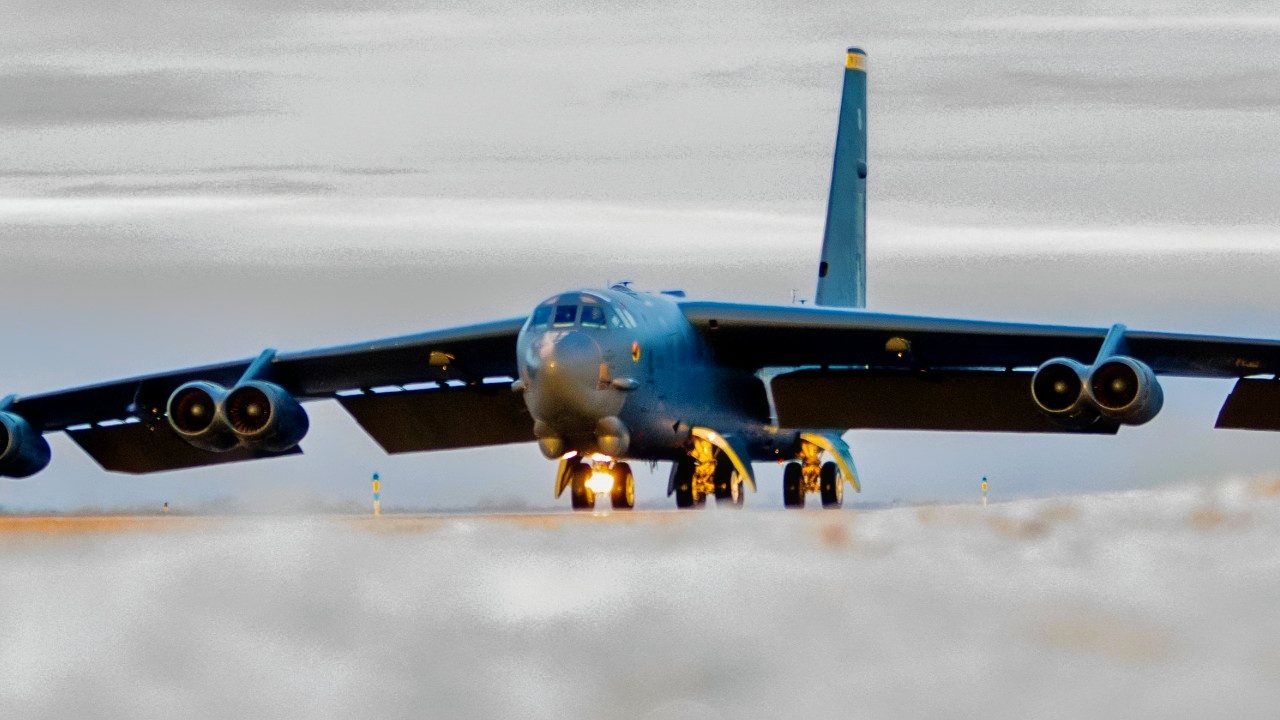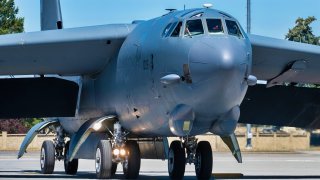The B-52 Bomber Will Become 1 of the Most Advanced 'Combat Platforms' on Earth
The U.S. Air Force is upgrading its B-52 Stratofortress, ensuring the 70-year-old bomber remains a key player in modern warfare. The upgrades include new engines and the capability to launch hypersonic missiles like the Hypersonic Attack Cruise Missile (HACM), expected to be in production by 2027.
Summary and Key Points: The U.S. Air Force is upgrading its B-52 Stratofortress, ensuring the 70-year-old bomber remains a key player in modern warfare. The upgrades include new engines and the capability to launch hypersonic missiles like the Hypersonic Attack Cruise Missile (HACM), expected to be in production by 2027.
-These advancements will help the B-52 remain effective in contested environments, particularly against China’s anti-access/area-denial (A2/AD) systems. The B-52J variant will allow the U.S. to project power beyond the reach of enemy defenses, maintaining air superiority in future conflicts.
-The Air Force plans to keep the B-52 operational into the 2040s.
The B-52 is Getting Some Serious Upgrades
America’s B-52 Stratofortress, affectionately known as the “Big Ugly Fat Fellow” (BUFF) by its crews, is getting some serious upgrades. A recent report from Christopher McFadden at Interesting Engineering details how the U.S. Air Force is upgrading their seemingly ageless long-range strategic bomber.
BUFF is getting new engines. It’s also eventually going to be able to launch the hypersonic weapons the Pentagon has been developing for what seems like a much longer time than taxpayers should be comfortable with.
China and Russia have significant arsenals of these weapons, whereas the Americans still do not have them. But the decision to upgrade the B-52s to make them capable of firing hypersonic cruise missiles should show the Pentagon is committed to developing these game-changing weapons.
It’s only too bad that the United States, while still struggling to build hypersonic cruise missiles, are even farther behind China and Russia in terms of longer-range hypersonic weapons.
Understanding the B-52 Bomber
The current B-52H model can carry an astonishing 70,000 pounds of ordnance that can deliver massive amounts of death and destruction from extraordinarily high altitudes. The current payload includes AGM-142 Raptor missiles, 51,000-pound bombs, 20 AGM-86C conventional air-launched cruise missiles, 12 joint standoff weapons, 12 joint direct attack munitions, and 16 wind-corrected munitions dispensers.
These birds can also drop naval mines.
America is preparing to operate in a highly contested modern global threat environment. Geopolitically, America will need every military advantage it can get, and it doesn’t always have the capability or financial resources to create entirely new platforms.
It is easier in the case of the B-52 to simply augment the bird with a new variant. Hence, the B-52J, which is expected to take wing within the decade.

The Upgrades
The B-52J will carry the Hypersonic Attack Cruise Missile (HACM) into battle. This system, currently under development by DARPA, is expected to be in production by 2027.
Conceivably, the B-52 fleet could be capable of firing the HACMs by then. And they will be desperately needed. After all, 2027 is the magic year the Pentagon believes China will have the military capacity to invade Taiwan.
A B-52J sporting a hypersonic cruise missile just might be what’s needed for America to stay competitive against the Chinese, who have developed anti-access/area-denial (A2/AD) capabilities specifically tailored to erase America’s military technology dominance.

These A2/AD systems, arrayed across the parts of the Indo-Pacific nearest to China’s shores, could negate whatever power projection capabilities the U.S. military has. If the A2/AD networks work as planned, China would in theory be able to rebuff U.S. military intervention against its forces, say in the event of a Taiwan invasion, and would have ample time to impose its will on the tiny island democracy.
The HACM launch capability, though, would make the new B-52 able to deploy devastating attacks from beyond the range of China’s A2/AD systems. The only thing at that point that the Americans would have to be concerned about would be the possibility that China’s new photonic microwave radar, which is believed to be able to track incoming hypersonic weapons, would be active and reliable enough to help Chinese defenders shoot down hypersonic cruise missiles fired by America’s B-52s.
China Won’t Be Able to Counter the New B-52J
Of course, saying that and actually achieving it are two totally different things. Sure, the Chinese might be able to track incoming American HACMs. Shooting them down, though, may not be as easy as it sounds. Especially if America builds enough of those HACMs to be able to swarm whatever defenses China arrays against this new threat.
Incredibly, the B-52, a 70-year-old bomber, will soon be one of the most advanced, relevant combat platforms in the world. In fact, the Air Force intends on flying these birds well into the 2040s, ensuring they would be nearly 100 years of age when finally retired.
Author Experience and Expertise: Brandon J. Weichert
Brandon J. Weichert, a National Interest national security analyst, is a former Congressional staffer and geopolitical analyst who is a contributor at The Washington Times, the Asia Times, and The-Pipeline. He is the author of Winning Space: How America Remains a Superpower, Biohacked: China’s Race to Control Life, and The Shadow War: Iran’s Quest for Supremacy. His next book, A Disaster of Our Own Making: How the West Lost Ukraine, is due October 22 from Encounter Books. Weichert can be followed via Twitter @WeTheBrandon.
All images are Creative Commons or Shutterstock.
From the Vault
Russia Freaked Out: Why the U.S. Navy 'Unretired' the Iowa-Class Battleships
Battleship vs. Battlecruiser: Iowa-Class vs. Russia's Kirov-Class (Who Wins?)


